Israel: Complex and Breathtaking
- Annie Mason
- Nov 14, 2019
- 14 min read
Updated: Jan 9, 2020
Trip Length: 2 weeks
Trip Budget: €100 per day for a couple ( Accommodation per night €60, Care Hire per day €15, Food and others per day €25 )
GENERAL INFORMATION
When we said we were heading to Israel, the first question everyone asked was, is it safe? Yes, yes, yes. The media plays such a large part in how we view places and they are so wrong. Every year nearly 4 million tourists visit Jerusalem and live to tell the story (I’m sure all 4 million were lined up to see the grotto in Bethlehem when we were there)!
There are however a few considerations before you visit. Israel is SUPER expensive, can be very crowded, very hot and working out how the place works can be tricky.
Israel takes our top position for the most expensive country we have travelled in – taking the crown from Iceland. A simple guest houses can be in excess of $100 US and even supermarket food can be a crazy price. Buses are reasonable and many religious sites are free which is a saving grace.
Israel also has climate extremes. Summer temperatures soar to 40+ so pick your time (Nov- Feb are the coolest months- but that can mean COLD in the desert and even snow in winter). Crowded can also another good descriptor. The old city is small (less than 1km square), streets are small (many are walking only) and the sites are small (a stone or a tomb). This adds up to people and traffic congestion unlike anywhere else in the world.
The country – Jerusalem in particular- lives on the religious schedules of Islam, Christianity and Judaism all rolled into one, so you have to plan and work out who is on holidays, what is open and how to avoid crowds. We had to go with the flow and if somewhere Jewish was closed, chances are the Christians are open for business just around the corner.
We chose to come to Israel to see the Jewish Sukkot festival. It was amazing to see the “Festival of Shelters” as thousands of Jews celebrated this holiday.
But all this considered, there is no-where on the planet quite like Israel. There is something about the “super-story” ingrained in every westerner, raised whether we like to acknowledge it or not, in the Judeo- Christian view of the world. To walk on the paths that Jesus walked can impact on even the most agnostic of us. To stand on the hill where the 10 commandments were handed down is astounding whether the details of the story is true or not, those commandments have become embedded in the moral code of the west. To see how this complex, diverse and contradictory country functions is intriguing. I encourage you when you visit to spend time reading and asking all sides of this complex country, how they understand and explain both historical and contemporary Israel. So, get you credit card (you’ll need it) a great guidebook and an open mind, and get going!
PRACTICAL INFORMATION
MONEY MATTERS- Did I mention how expensive it is? Just so you don’t forget- Israel is EXPENSIVE! The good news is CC are widely used and cash has a good rate. There are lots of ATM’s and money changers.
COMMUNICATION- Israel is not a part of the European Go Roam data program. Prepaid SIMs can be purchased from supermarkets, small stores and service stations. Phone credit can be found at the same retail outlets or by using a credit card online. There are no rules or regulations when purchasing a SIM card in Israel, so you won't need any form of ID. WIFI is widely available.
ELECTRICITY- European 2 round pin plugs with new places having the universal holes.
SHOPPING AND EATING-There are good supermarkets, western in style but mostly Middle Eastern in produce, all around the country. There are small private convenience stores on most corners with bread, drinks, snacks and some fruit and vegies. Outside the Old city there are McDonalds, coffee chains and western food take-aways. But with amazing shawarma (chicken shaved from the big spit), hommos that is some of the best in the world and the pita is to die for, I can’t think you will go hungry.
PLACES TO STAY- Israel has the full range but quality varies dramatically. We tend to stay in accommodation with shared kitchens and lounges so we can meet people. We had the best and the worst, in our time here. Jerusalem is EXPENSIVE over $100 for a guest house and over $200 for a hotel. The Arab sections of the city tend to be cheaper. Rooms are generally on the small side.
GETTING IN/OUT and MOVING ABOUT
GETTING THERE-Most people arrive at Ben Gurion Airport in Tel Aviv, a modern and efficient airport. You may hear horror stories about how long it takes to pass security, but our experience in leaving from here was the opposite. We arrived via Amman over the Allenby Bridge- 50 km from Jerusalem. The Israeli side was quick (after 2 hours to get out of Jordan) and there were shuttle buses waiting just outside immigration for the 40 min trip to the Damascus gate in Jerusalem (they will drop you anywhere along the way if you ask). There are 2 other land crossings, one from Aqaba into Eilat and one north of Amman into the west bank. Both are less busy than the Allenby Bridge (called King Hussein on the Jordanian side just to confuse you). There are lots of websites with details descriptions about the crossing if you are worried, but it was easy- just allow extra time in case.
GETTING AROUND-Buses are reasonable and there is an extensive network . Different companies serve different parts of the country. We opted to hire a car and through Expedia found a good small car for $30 AUD a day (which when you add up 2 bus fares, is reasonable). That allowed us to get to most of the places we wanted to see as some are out of the way. Fuel is expensive ($3 a litre), but thankfully distances are short. Traffic is unpredictable and don’t expect the average 100km we would get on an Aussie highway. We averaged 40km an hour on our trip from Jerusalem to Nazareth. There is only one toll road around Tel Aviv, and car rental companies will charge a fee of $15 on top of the toll if you use it. There are lots of traffic lights and lots of people. Drivers are unpredictable and I decided that “selfish” was probably an accurate description as they tend to think that they are the only person on the road. You will see some of the craziest parking in the world.
ITINERARY
It is easy to divide Israel into north, south, Jerusalem (including the West Bank) and Tel Aviv. We managed it in 2 weeks but it was pushed. But as usual, if you have more time, you will see so many of the out of the way places- and Israel has lots of those!
Jerusalem: (Suggested 5 days) We visited twice and stayed once just outside Herod’s Gate in the Arab area and once just inside the Damascus gate. Some people expressed concern about safety (our Jewish friends in particular), but we walked around after dark and did not feel unsafe. There are armed police and security checks at sensitive points around the city- I’m not sure if that should make you feel safer or not? This is where, it is “all happening” so is really a great place to stay. Many of the more expensive (and nicer) hotels are outside the Old City in the King David Hotel area.
We made up a few day itineraries that summarise how we spent each day in Jerusalem:
The Christian Quarter
It is not possible to be unmoved by the history that passes under your feet in this city. The faithful from every Christian church on the planet are here. Their devotion is evident. Every corner has a shrine or a church where people have worshipped for thousands of years. Here are just some of the Christian highlights:
Via Dolorosa- The ‘Way of the Cross’ leading to Holy Church of the Sepulchre is the route that Jesus followed on his journey to his crucifixion. There are marked stations and frequent guided tours. Just imagine the scene that unfolded here….
Church of the Holy Sepulchre- This amazing church is unlike any other church in the world. It covers the area that was considered to be where Jesus was crucified and the site of the tomb where he was buried. It sprawls up what was once a hill and inside you climb steep steps to the place on the “hill” where the cross was (now all inside the church). It has the slab the body of Jesus was said to have been laid. A complex of buildings, shared by different Christian faiths covers both sites. It is truly stunning with its dark passageways, incense, candles and altars. It is very busy to come early (it opens at 4am) or late (it closes at 7pm) and consider a mass or a procession (held at 4pm daily).
Ethiopian Monastery- A medieval cloister built by the Crusaders. On the wall are pictures showing the legend of the Queen of Sheba with King Solomon. The Ark of the Covenant was said to be taken to Ethiopian from here. Is there anything that didn’t happen in this city?
Outside the Walls: We spent a day walking around the outside of the walls as there are some main sites outside the ancient walls. You can do a paid rampart walk which would overlook some of these sites. Most of the way is well paved, with some ups and downs and periods with not much shade. We headed clockwise from Herod’s Gate (where we were staying) to:
The Mount of Olives with stunning views and Jewish graves dating bake 3000 years. The stunning Church of Mary Magdalene is part way up. At the base you find the Gardens of Gethsemane, the tomb of the Virgin Mary and the stunning Church of Nations. You can walk through or along the road overlooking the Kidron valley with the tombs of the prophets.
The City of David historical excavation site was the next stop with stunning valley views along the way. This is the site where the city of Jerusalem originally stood (on a ridge overlooking the valley).
Mount Zion where David’s Tomb, the Dormition Abbey and the Room of the Last Supper (built by the crusaders 800 years ago, upon the remnants of an ancient Byzantine Church) can be found. You can re-enter the city here as there is less to see outside here or continue on the outside.
Jaffa Gate (one of the six original gates built by Suleyman the Magnificent between 1537 and 1542) and David’s Tower Museum (Herod’s Palace and where he judged Jesus). We went to the amazing light show in the museum after it closes (7 and 8 pm). Well worth the $28 each to see the best audio-visual presentation we have ever seen (book ahead online). Then out again (or stay in as there is more to see inside in this section).
Damascus Gate is the next stop and just a short walk to finish the circuit.
Great if you are counting steps- but a good LONG day that can easily be split into 2 days.
The Jewish Quarter and The Temple Mount:
Make sure you include a visit on Friday evening to this quarter as this is a special time in this part of the city. The different sects of Judaism will come out to pray. You will see the ultra conservatives dressed in the clothing of their ancestors alongside Jews who have travelled from Africa.
Western Wall (Wailing Wall)- The remains of the foundations of the 2nd Temple this is the place the Jews have left to pray, and it is truly a sacred place. We headed straight to this iconic heart of Jewish Jerusalem- men to one side and women to the other. The women have the advantage of being able to enter stairs to the right and go underground to where only women can pray in the foundations to the ancient temple. We took the Kotel tunnel tour to see the excavated tunnels and remains- it was amazing and worth the $15 each (book ahead online).
The Herodian Quarter Museum ( an excavation with layers down the slope of the hill) and Burnt House Museum (an ancient home buried 6m below the ground)- are both excellent museums in this area that show the history of this amazing city.
The Temple Mount- is the place of places- so disputed- so adored and an unmissable landmark. The times it is open are limited so plan ahead. An elevated Cyprus Plaza which is the home to the Dome of the rock and Al Aqsa Mosque (688), is considered to be the location of the first and second temples and the place where Abraham was to sacrifice his son and Mohammed ascended into heaven.
The West Bank:
The name alone prompts discussion and polarises opinion on the “Palestinian problem”. Travel for tourists is easy and safe but Israelis do not visit and are not welcome.
Bethlehem-Many people take a day trip with an organised company as it is simpler and possible to see more places in one day. Public buses are easy and cheap and leave from the Damascus gate every 15-20 mins. The Church of the Nativity was crowded beyond belief but it is a nice town.
The interest in the other West Bank towns is mixed- sometimes it is just to see. Jericho is said to be the oldest city still in existence. Moving in and out of the West Bank is easy for tourists.
Out of the City:
Yad Veshem- There are few words to capture this museum, as the Holocaust leaves us all speechless. The choice of its location on Mount Herzl, known as the Mount of Remembrance, is a beautiful one, overlooking the Judean Hills on one side and Jerusalem on the other. It is a place to spend a day- quietly reflecting on the inhumanity of man. It leaves you drained and speechless.
Ein Kerim- Nice village outside city near Yad Veshem
Israel Museum- Considered one of the top museums in the world, it helps explain the complex history of this country, albeit with a nationalistic slant.
Tel Aviv: What a contrast! There could not be two cities more different than Tel Aviv and Jerusalem. A clean, modern city where ancient Jaffa blends in with the beach promenade and Rothschild avenue. Lots of artists, museums and beaches. Close to the airport, Tel Aviv is a good first or last stop.
Jaffa- This ancient Tel Aviv suburb has colourful alleys, multicultural restaurants and a pretty, ancient port overlooked by the Al-Bahr Mosque.
Be’er Sheva- War memorial- This is sort of near Tel Aviv and en-route if you are driving from the south. I add this especially for the Aussies and New Zealanders. In 1917 the 4th Australian Light Horse Brigade charged over the Turkish trenches into the town of Be’er Sheva and turned the course of WWI in Palestine.
Ramon Crater- The world’s largest erosion crater created 200 million years ago and 40 km long (again en-route if you are coming from the south)
The North: We used Nazareth as a base to explore the northern part of Israel. It is a couple of hours drive north of Jerusalem. From Nazareth there are some great (can be long) day trips to the north.
Nazareth area: Megiddo, Nazareth, Zippori:
Megiddo- there are around 20 ancient cities piled on top of each other here. Also known as Armageddon, it is mentioned in the Bible as a place of apocalyptic battle.
Nazareth- Nazareth has over 20 Christian churches revering Jesus of Nazareth, the most famous being the Basilica of the Annunciation, on the site of where it is said Mary saw the Angel Gabriel. It is a long time Christian centre with some lovely churches and a nice feel.
Zippori-The remains of ancient Zippori (Sepphoris) include findings from the Roman period, through to the era of the Crusades. Walking through the site, you get a real feel for the layers of settlement here, with the Byzantine church, a Roman theatre, and the remains of the Crusader castle the top attractions. Walk amongst incredible ancient ruins and see some of the most exquisite ancient mosaics.
North Coast: Roth HaNikra and Akko:
Akko- Marco Polo passed through, Alexander the Great spoke of the city and at the time of the Crusaders it was the most important Jewish community in Israel. The city is circled by the wall to the west and ramparts. Truly beautiful.
Rosh Ha Nikra-The stunning cliffs on the Lebanese border and with a cable car down to sea caves.
Golan Heights: Safed and Nimrod:
A contested territory since Israel captured it from Syria in 1967 occupying most of it ever since, the Golan Heights is made up of elevated fertile plateaus, superb views, basalt cliffs and volcanic hills.
Safed- A hillside town, on the way to the Golan Heights, thrived during the Ottoman years and has ruins of the Crusader fort to prove it.
Nimrod- A crusader castle in the far north.
West side and northern end of the Sea of Galilee: Mt Arbel, Tiberius, Tabgha, Capernaum, Bethsaida:Also known as Lake Kineret, the Sea of Galilee is not only a place of Christian pilgrimage but also the largest freshwater lake in the country, with a backdrop of the Galilee Mountains and Golan foothills. It is a long day but possible to circle the lake with stops in one day. If you want to head to the Golan Heights, it is better to do one side of the lake one day and the other on a second day. Heading from Nazareth and going clockwise around the lake we passed through:
Mt Arbel – A national park overlooking the lake with great views, caves and an ancient synagogue.
Tiberius- On the Lakes edge with a great promenade
Tabgha- Best known for Christ’s miraculous multiplication of loaves and fish to feed a multitude. A lovely church marks the spot.
Capernaum- The New Testament says that the prosperous lakeside village of Capernaum, on the imperial highway from Tiberias to Damascus, was Jesus’s base during the most influential period of his ministry. This is where Jesus is believed to have preached at the synagogue, healed the sick and recruited his first disciples.
Mount of the Beatitudes- The Mount of Beatitudes, believed to be the setting for the Sermon on the Mountand the place where Jesus met his apostles after his Resurrection, is a beautiful church and garden in the hills 3km from Capernaum.
Bethsaida- The ruins here (inside Jordan River Park), are believed to be those of the ancient fishing village of Bethsaida, where Jesus is said to have fed 5000 people with just five loaves of bread and two fish, walked on water and healed a blind man. The site is surrounded by pre-1967 Syrian trenches and minefields.
Southern end of the Sea of Galilee: Mt Tabor, Beth She ‘an and Hamat Gadar
Mt Tabor- Mount Tabor stands some 420 metres above the plain in lower Galilee, just outside Nazareth.
Hamat Gadar- Hot springs with a resort.
Beth She ‘an- Beit Shean is one of the oldest cities in Israel and is one of the country’s largest archaeological sites. Beit Shean was settled about 6000 years ago. Excavation of a large mound in Beit Shean has revealed over 20 layers of remains from ancient civilizations and is best known as the site where King Saul and his sons were hung from the city walls.
Haifa and Caesarea:
Haifa- The Shrine of Baha’u’llah is the most sacred sight for the Bahai faith is a lovely formal garden looking down over the port. There is not much more to see in Haifa as it is now mostly a modern port city.
Caesarea- A town built by Herod the Great, Caesarea has seen various invasions over time, so as well as visiting the Roman port, aqueduct and amphitheatre, the ruins of the 12th century Crusader city are impressive. It has however, got a bit of a theme park feel as it holds a great position on the coast and is a popular swimming, dining and picnic spot.
The South:
The Dead Sea- If you drive from Jerusalem you will take the 90 and drive along the Dead Sea in the West Bank. The views are stunning but due to dangerous sink holes there is only one or two places to swim and these are underdeveloped. The main place to get in the water is Ein Bokek. There is a hotel zone, with a clean free beach with amenities- you pay only for parking. There are ample other beaches just to the south.
Ein Gedi- This reserve consists of two roughly parallel canyons, Wadi David and Wadi Arugot. The Wadi David walk moves through a canyon and ends at a waterfall.
Masada- On an isolated clifftop in the heart of the desert, a lofty plateau overlooking the Dead Sea and the untamed landscape of the Judean Desert, there once stood a magnificent palace.
Either take a challenging hike or cable car up to this fort, built by Herod, an iconic location where Jewish Zealots took on the Romans, won them over and, when the Romans built a huge earth ramp to take it back again, committed mass suicide rather than be taken.
The Arava- We stayed here with our friends Pam and Richard and their daughter Talia and her family. In the heart of the moshavim (agricultural communities) and with stunning desert scenery it is worth a stop on the way to Eilat.
Timna Park- Just north of Eliat this is a national park with famous rock pillars and natural canyons. Ammrans Pillars are a stunning rock formation nearby.
Eilat- The end of the road and a busy coastal city with beaches, resorts and everything that comes with that.
And there ends our Israel trip- we saw SO much but also missed SO much! We could easily have had another 2 weeks and still have not seen it all. Israel is truly the most amazing and complex country- but don’t take my word for it- get out and see it for yourself.
If added some of the route maps we used.
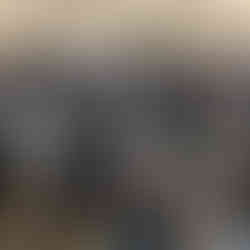



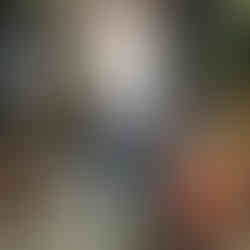

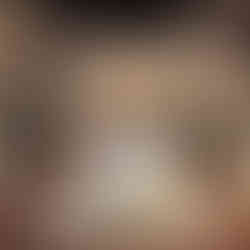

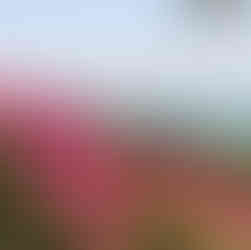

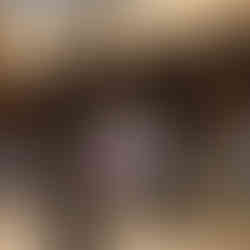





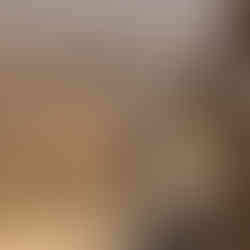

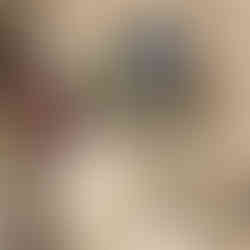

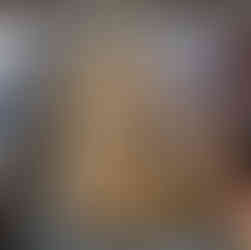

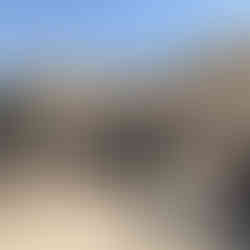

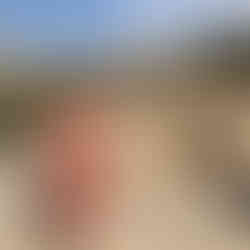

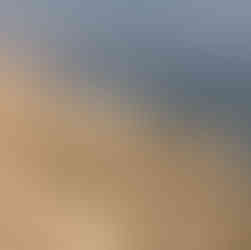

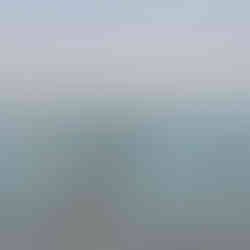

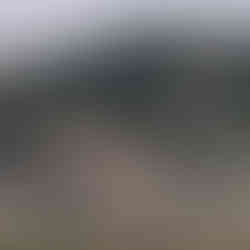

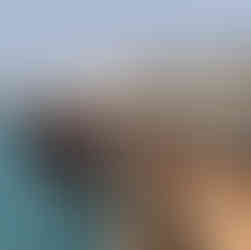

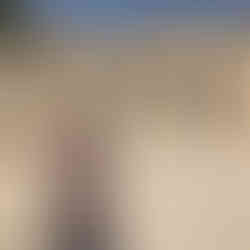

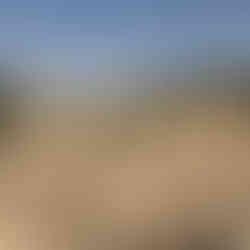


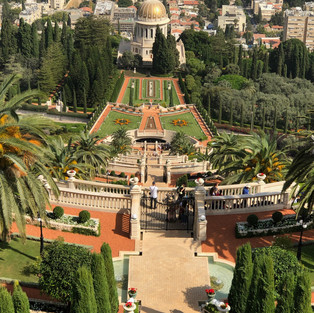
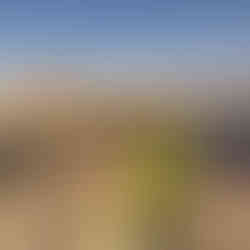

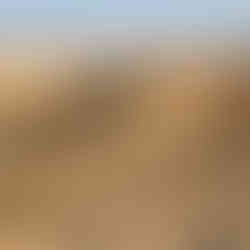

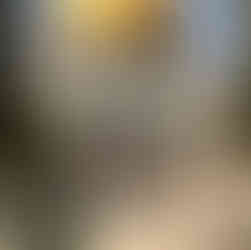



Comments